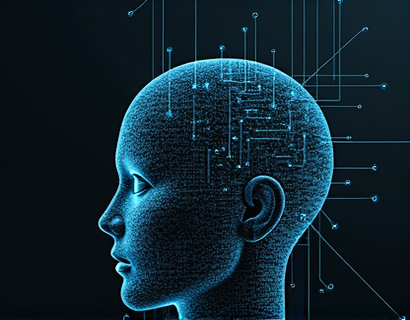AI-Powered Cosmic Learning: Interactive Exploration with Customizable Settings for Educators and Space Enthusiasts
In the realm of education and space exploration, the integration of artificial intelligence (AI) has opened new avenues for interactive and personalized learning experiences. This article delves into the concept of an AI-powered learning tool designed to make space and astronomy accessible, engaging, and customizable for both educators and space enthusiasts. By leveraging advanced AI technologies, this tool offers a unique platform for exploring the vast and intricate universe, tailored to individual interests and learning styles.
The core functionality of this AI-powered learning tool revolves around interactive explorations of celestial phenomena and astronomical concepts. Users can embark on a personalized cosmic journey, guided by an intelligent system that adapts to their knowledge level, preferences, and learning pace. This adaptive learning environment ensures that whether a user is a beginner or an advanced space enthusiast, they receive content that is both challenging and informative.
Customizable Learning Settings
One of the standout features of this AI-powered tool is its customizable settings. Users can adjust various parameters to tailor their learning experience. These settings include the depth of information, the type of content, and the pace of the exploration. For instance, a user can choose to focus on specific areas of astronomy, such as planetary science, astrophysics, or space exploration history. This flexibility allows educators to create lesson plans that align with their curriculum, while space enthusiasts can dive into topics that spark their curiosity.
Moreover, the tool offers different modes of interaction, such as text-based explanations, interactive simulations, and visual aids like 3D models and animations. These diverse formats cater to different learning preferences, ensuring that users can engage with the material in the way that suits them best. For educators, this means they can assign activities that cater to the diverse needs of their students, promoting inclusivity and effective learning.
Interactive Explorations
Interactive explorations are at the heart of this AI-powered learning tool. Users can embark on virtual journeys through the solar system, explore distant galaxies, and even simulate space missions. These interactive experiences are not just visually stunning but also scientifically accurate, providing a realistic and immersive learning environment. The AI system dynamically adjusts the complexity of the content based on the user's interactions, ensuring that the learning curve is always appropriate.
For example, a user can start with a basic tour of the planets in our solar system and gradually move on to more complex topics like dark matter and black holes. The AI can present these advanced concepts through step-by-step explanations, interactive quizzes, and real-time feedback. This gradual progression helps build a solid foundation of knowledge, making complex topics more accessible.
Personalized Learning Paths
The AI-powered tool creates personalized learning paths for each user, based on their initial inputs and ongoing interactions. This personalization is achieved through a combination of user profiles, learning history, and real-time performance analysis. The system remembers previous topics covered, the user's performance in quizzes, and their expressed interests, using this data to curate a tailored learning experience.
For educators, this feature is particularly valuable as it allows them to track the progress of their students and identify areas where additional support may be needed. The AI can generate detailed reports and recommend specific resources or activities to enhance understanding. This data-driven approach ensures that both educators and learners can monitor and adjust the learning process effectively.
Engaging Content and Multimedia Resources
To keep users engaged, the AI-powered learning tool incorporates a rich array of multimedia resources. High-quality images, videos, and interactive diagrams complement the textual content, providing a multi-sensory learning experience. These resources are sourced from reputable scientific databases and space agencies, ensuring accuracy and reliability.
For instance, users can watch live feeds from space telescopes, view high-resolution images of celestial bodies, or watch documentaries on space missions. The AI can also generate custom multimedia content based on the user's current topic of interest, such as animated explanations of gravitational waves or interactive models of rocket propulsion systems. This variety keeps the learning experience fresh and engaging, reducing the likelihood of user disengagement.
Real-Time Interaction and Feedback
One of the most innovative aspects of this AI-powered tool is its real-time interaction and feedback system. Users can ask questions, and the AI provides immediate responses, often with additional context or related information. This instant feedback loop enhances the learning experience by addressing user queries on the spot, fostering a deeper understanding of the subject matter.
For educators, this feature can be used to facilitate live sessions or online classes. The AI can act as a virtual assistant, handling routine questions and allowing the educator to focus on more complex discussions. This not only improves the efficiency of the learning process but also enriches the educational experience for all participants.
Collaborative Learning Opportunities
The AI-powered learning tool also supports collaborative learning, allowing users to join groups or forums based on shared interests. These communities provide a platform for users to discuss topics, share resources, and collaborate on projects. The AI can moderate these discussions, ensuring that the content remains accurate and relevant. It can also suggest collaborative activities, such as group quizzes or joint research projects, to enhance the learning experience.
For educators, these collaborative features can be used to create classroom projects that extend beyond the traditional learning environment. Students can work together on space-related projects, fostering teamwork and communication skills while deepening their understanding of astronomy and space science.
Adaptive Difficulty and Progression
The AI-powered tool dynamically adjusts the difficulty level of the content based on the user's performance and progress. This adaptive difficulty ensures that users are consistently challenged but not overwhelmed. The system can introduce more advanced concepts as the user demonstrates mastery of previous topics, creating a smooth and progressive learning curve.
For example, a user who excels in understanding basic astronomy concepts might be presented with more complex topics like exoplanet atmospheres or the search for extraterrestrial life. The AI can also provide additional challenges, such as research papers or advanced simulations, for users who wish to delve deeper into specific areas of interest. This adaptive approach keeps the learning experience engaging and continuously stimulating.
Accessibility and Inclusivity
Accessibility is a key consideration in the design of this AI-powered learning tool. The platform is designed to be user-friendly and accessible to a wide range of users, including those with disabilities. Features such as text-to-speech, adjustable text sizes, and high-contrast modes ensure that the tool is usable by everyone. The AI can also provide content in multiple languages, making space education more inclusive on a global scale.
For educators, this inclusivity means they can use the tool to create a more diverse and inclusive classroom environment. Students with different learning needs and backgrounds can all participate and benefit from the same educational resources, promoting equity in learning opportunities.
Continuous Learning and Updates
The AI-powered learning tool is designed to evolve with the latest developments in space science and astronomy. The system regularly updates its content to reflect new discoveries, technological advancements, and changes in the field. This ensures that users always have access to the most current and accurate information.
For educators, staying updated with the latest research and findings is crucial for providing relevant and cutting-edge education. The AI tool can serve as a valuable resource for educators to stay informed and incorporate new knowledge into their teaching. This continuous learning loop benefits both educators and learners, keeping the educational content fresh and relevant.
Conclusion
In conclusion, an AI-powered learning tool that offers interactive explorations and customizable settings represents a significant advancement in space education and astronomy. By providing personalized, engaging, and adaptive learning experiences, this tool makes the universe accessible and exciting for educators and space enthusiasts alike. Whether used in a classroom setting or for personal exploration, this tool has the potential to inspire a new generation of space explorers and scientists, fostering a deeper understanding and appreciation of the cosmos.










































